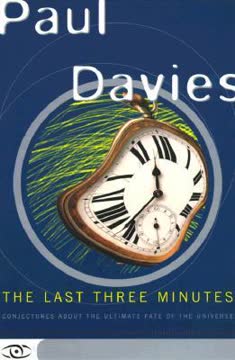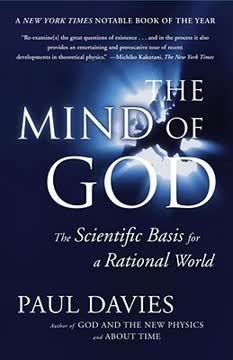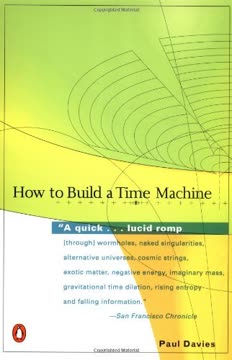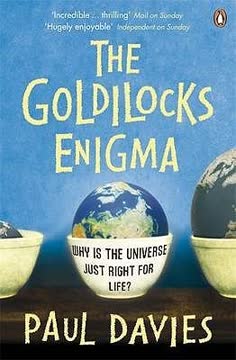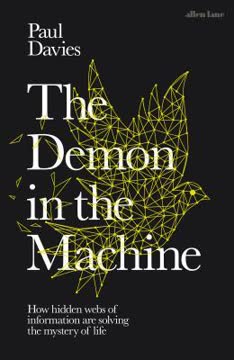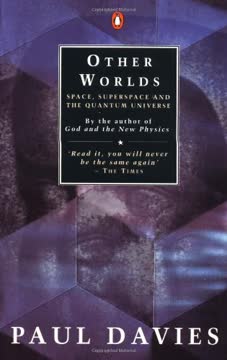Key Takeaways
1. The Universe Has a Finite Lifespan
"So far I have assumed that the end of the universe, whether by bang or whimper (or, more accurately, crunch or deep freeze), is set in the very distant, possibly the infinite, future."
Cosmic Mortality. The universe is not immortal, but subject to fundamental physical laws that determine its ultimate fate. Unlike previous scientific perspectives that viewed the cosmos as eternal, modern cosmology recognizes that universes have lifecycles with definitive beginnings and potential endings.
Potential Scenarios:
- Eternal expansion leading to heat death
- Eventual gravitational collapse (big crunch)
- Potential cyclic regeneration
- Quantum-level transformation
Scientific Understanding. Advances in physics, particularly thermodynamics and relativity, have provided insights into how universes might die, challenging earlier assumptions about cosmic permanence and opening up radical possibilities for understanding existence.
2. Stars Are Cosmic Time Machines
"It is an arresting thought that the very stuff of our bodies is composed of the nuclear ash of long-dead stars."
Stellar Evolution. Stars are not static entities but dynamic systems that transform matter through nuclear processes, creating and dispersing elements essential for life. They function as cosmic factories, converting hydrogen into increasingly complex elements through fusion reactions.
Stellar Life Cycles:
- Birth in gas clouds
- Nuclear burning phase
- Expansion and contraction
- Potential supernova explosion
- Remnant formation (neutron star, black hole)
Elemental Creation. Every atom beyond hydrogen originated inside stars, making stellar processes fundamental to the existence of planets, life, and complex structures in the universe.
3. Gravitational Forces Shape Cosmic Destiny
"Gravity is by far the weakest force of nature, but its insidious and cumulative action serves to determine the ultimate fate not only of individual astronomical objects but of the entire cosmos."
Gravitational Influence. Despite being the weakest fundamental force, gravity plays a crucial role in determining large-scale cosmic structures and evolution. Its cumulative effects can overwhelm other forces over immense time scales.
Gravitational Processes:
- Star formation and collapse
- Galaxy clustering
- Black hole creation
- Potential universal expansion or contraction
Cosmic Engineering. Advanced civilizations might potentially manipulate gravitational processes to extend their survival or create new cosmic environments.
4. Matter Will Eventually Disintegrate
"All matter will end up inside black holes or through slow nuclear decay."
Fundamental Instability. At quantum scales, matter is not permanent but subject to decay processes that will eventually break down all known structures, including protons and neutron-based matter.
Decay Mechanisms:
- Proton decay
- Quantum tunneling
- Black hole evaporation
- Particle transformation
Long-Term Implications. The universe will gradually transition from complex structures to increasingly simple, dispersed states of energy and radiation.
5. Life Can Adapt to Extreme Cosmic Conditions
"Given long enough—and our descendants certainly have plenty of time at their disposal—even whole galaxies could be maneuvered."
Adaptive Potential. Living or technological systems might develop strategies to survive in increasingly hostile cosmic environments by modifying their fundamental nature and information-processing capabilities.
Survival Strategies:
- Genetic engineering
- Technological augmentation
- Information processing optimization
- Energy conservation techniques
Transformative Evolution. Survival might require radical reimagining of consciousness, moving beyond biological or current technological constraints.
6. Technological Beings Might Survive Universal Decay
"By clever organization, they could still think an infinite number of thoughts and experience an infinite number of experiences."
Technological Immortality. Advanced civilizations might develop methods to persist through universal entropy by developing sophisticated information processing and energy management techniques.
Survival Mechanisms:
- Hibernation strategies
- Analog information processing
- Minimal energy consumption
- Distributed consciousness
Philosophical Implications. Survival might transcend traditional biological or material constraints, suggesting consciousness as a potentially portable, adaptable phenomenon.
7. Quantum Processes Offer Potential Immortality
"It is possible to conceive of a system thinking an infinite number of thoughts without needing any sort of power supply!"
Quantum Possibilities. Quantum mechanics suggests potential pathways for information preservation and processing that challenge classical thermodynamic limitations.
Quantum Survival Strategies:
- Reversible computation
- Information preservation
- Non-dissipative thinking processes
- Quantum state manipulation
Fundamental Reimagining. Understanding quantum processes might reveal novel approaches to preserving consciousness beyond traditional energy constraints.
8. Multiple Universes Could Ensure Continued Existence
"Each individual universe would have a birth, evolution, and death... but the collection as a whole would exist eternally."
Metaverse Concept. The possibility of universe creation suggests a broader cosmic context where individual universes might be part of a larger, potentially infinite system of generation and regeneration.
Multiverse Mechanisms:
- Quantum bubble formation
- Intentional universe creation
- Evolutionary universe generation
- Information transfer between universes
Existential Hope. The concept of multiple universes provides a philosophical and scientific framework for understanding potential continuity beyond individual cosmic lifecycles.
9. Entropy Doesn't Necessarily Mean Total Destruction
"The universe may be running down, but it is not running out."
Complex Systems. Entropy and decay do not preclude the emergence of increasingly sophisticated organizational structures and information processing capabilities.
Complexity Principles:
- Order can emerge within entropic systems
- Information has qualitative, not just quantitative, dimensions
- Organizational complexity can increase despite energy dissipation
Transformative Potential. The universe might continue generating novel structures and experiences even under conditions of increasing disorder.
10. Complexity Can Emerge Even in Dying Systems
"The history of the universe is therefore the history of the growth of organized complexity."
Evolutionary Dynamics. Complex systems can develop and maintain sophisticated organizational structures despite underlying entropic processes.
Complexity Mechanisms:
- Information generation
- Structural self-organization
- Adaptive information processing
- Emergent systemic behaviors
Philosophical Significance. The capacity for complexity suggests that meaningful experience and development are possible even under seemingly limiting conditions.
Last updated:
FAQ
What is "The Last Three Minutes" by Paul Davies about?
- Explores the universe's ultimate fate: The book investigates scientific theories and conjectures about how the universe might end, from cosmic heat death to sudden annihilation.
- Blends cosmology and philosophy: Davies combines the latest scientific understanding with philosophical reflections on meaning, purpose, and the human place in the cosmos.
- Accessible to general readers: Written for those without a scientific background, the book explains complex concepts like entropy, black holes, and quantum physics in clear language.
- Covers both science and speculation: While grounded in current physics, Davies openly discusses speculative ideas about life, consciousness, and the possibility of cosmic rebirth.
Why should I read "The Last Three Minutes" by Paul Davies?
- Comprehensive overview of cosmic fate: The book provides a thorough, up-to-date summary of what science knows (and doesn't know) about the universe's end.
- Engages with big existential questions: It addresses not just physical processes, but also what they mean for humanity, life, and the possibility of immortality.
- Bridges science and imagination: Davies explores both established theories and imaginative scenarios, such as baby universes and technological immortality.
- Written by a leading physicist: Paul Davies is a respected cosmologist, ensuring scientific rigor alongside accessible explanations.
What are the key takeaways from "The Last Three Minutes" by Paul Davies?
- The universe is not eternal: Scientific evidence points to a universe with a beginning (the Big Bang) and likely an end, whether by heat death, collapse, or sudden catastrophe.
- Entropy and the second law: The second law of thermodynamics predicts an eventual "heat death," where all energy is evenly distributed and no useful work can occur.
- Multiple end scenarios: Davies discusses several possible endings, including slow decay, big crunch, sudden vacuum decay, and the creation of new universes.
- Life and intelligence may adapt: The book speculates on how advanced life might survive or even influence cosmic fate, but acknowledges fundamental physical limits.
- Meaning and purpose are open questions: The ultimate fate of the universe raises profound philosophical issues about purpose, progress, and the value of existence.
How does "The Last Three Minutes" by Paul Davies explain the Big Bang and the universe's beginning?
- Big Bang as origin: The book describes the Big Bang as the origin of space, time, matter, and energy, not just an explosion in pre-existing space.
- Evidence for the Big Bang: Davies summarizes key evidence, including the expansion of the universe, cosmic background radiation, and the abundance of light elements.
- Inflationary theory: He explains the concept of cosmic inflation—a rapid expansion in the universe's first fraction of a second—which helps solve puzzles about uniformity and structure.
- Quantum origins: The book discusses how quantum physics and vacuum states may have played a role in the universe's birth.
What is the "heat death" of the universe according to "The Last Three Minutes" by Paul Davies?
- Entropy's relentless increase: The heat death scenario arises from the second law of thermodynamics, which states that entropy (disorder) always increases in a closed system.
- End of usable energy: Over immense timescales, all energy differences even out, leaving the universe cold, dark, and unable to support life or activity.
- No more physical processes: In this state, no significant events or structures can form; the universe becomes a dilute soup of particles and radiation.
- Philosophical implications: Davies discusses how this scenario has influenced thinkers like Bertrand Russell, leading to existential reflections on futility and meaning.
How does "The Last Three Minutes" by Paul Davies describe the roles of stars, black holes, and other cosmic objects in the universe's fate?
- Stellar evolution and death: The book details how stars exhaust their nuclear fuel, becoming white dwarfs, neutron stars, or black holes, and how this process shapes cosmic history.
- Black holes as energy sources: Davies explains that black holes can release more energy than stars, and may play a crucial role in the universe's long-term evolution.
- Gravitational radiation and mergers: Over trillions of years, gravitational waves cause dead stars and black holes to merge, leading to a universe increasingly dominated by black holes.
- Hawking radiation and black hole evaporation: Eventually, even black holes evaporate via Hawking radiation, leaving behind only elementary particles and radiation.
What are the possible end scenarios for the universe discussed in "The Last Three Minutes" by Paul Davies?
- Eternal expansion and heat death: The universe expands forever, cooling and fading into darkness as energy dissipates.
- Big crunch: If the universe's mass is sufficient, expansion halts and reverses, leading to a catastrophic collapse and a final singularity.
- Sudden vacuum decay: A quantum transition could abruptly change the laws of physics, destroying the universe at the speed of light without warning.
- Cyclic and baby universe models: Davies explores ideas where the universe might bounce, cycle, or spawn new universes, potentially offering escape from cosmic doom.
How does "The Last Three Minutes" by Paul Davies address the possibility of life and intelligence surviving into the far future?
- Technological adaptation: The book speculates that advanced civilizations might harness black holes, manipulate stars, or engineer cosmic structures to prolong survival.
- Limits of physics: Despite ingenuity, fundamental laws like entropy and energy dissipation impose hard limits on survival and information processing.
- Dyson's hibernation scenario: Davies discusses Freeman Dyson's idea that life could slow its metabolism, stretching subjective time indefinitely even as resources dwindle.
- Ultimate challenges: In both expanding and contracting universes, life faces insurmountable obstacles—either from dwindling energy or rising temperatures.
What is the significance of entropy and the second law of thermodynamics in "The Last Three Minutes" by Paul Davies?
- Drives cosmic evolution: Entropy's increase underlies the universe's progression from order to disorder, shaping the fate of stars, galaxies, and life.
- Heat death as a consequence: The second law predicts the eventual exhaustion of all free energy, leading to the heat death scenario.
- Irreversibility and time's arrow: Entropy provides a direction to time, making processes like aging, decay, and cosmic evolution irreversible.
- Complexity and order: Davies distinguishes between entropy (disorder) and organized complexity, suggesting that complexity can increase even as entropy rises.
How does "The Last Three Minutes" by Paul Davies explain advanced concepts like quantum vacuum, false vacuum, and vacuum decay?
- Quantum vacuum: The vacuum is not empty but filled with fleeting "virtual" particles due to quantum uncertainty, influencing cosmic processes.
- False vacuum: The universe may exist in a metastable vacuum state with higher energy than the true vacuum, potentially subject to sudden decay.
- Vacuum decay scenario: If a bubble of true vacuum forms, it would expand at light speed, altering the laws of physics and annihilating everything in its path.
- Cosmic inflation and baby universes: These concepts are linked to inflationary theory and the speculative idea of creating new universes via vacuum transitions.
What philosophical and existential questions does "The Last Three Minutes" by Paul Davies raise about meaning, purpose, and immortality?
- Is the universe pointless?: Davies discusses how the prospect of cosmic death has led some, like Bertrand Russell and Steven Weinberg, to question the meaning of existence.
- Purpose versus eternity: The book asks whether a universe with a purpose must end, and whether endless existence without purpose is desirable.
- Immortality and progress: Davies explores whether true immortality is possible or meaningful, especially if it involves endless repetition or stagnation.
- Role of intelligence: The possibility that advanced beings could influence cosmic fate raises questions about the relationship between mind, matter, and the universe's destiny.
What are the best quotes from "The Last Three Minutes" by Paul Davies and what do they mean?
- "What can come to exist can also cease to exist." — Highlights the impermanence of all things, including the universe itself, and sets the tone for the book's exploration of cosmic mortality.
- "The universe may be running down, but it is not running out." — Suggests that while entropy increases, the universe's potential for complexity and novelty may persist for a long time.
- "If there is a purpose to the universe, and it achieves that purpose, then the universe must end, for its continued existence would be gratuitous and pointless." — Raises a profound philosophical question about the relationship between purpose and finitude.
- "The last three minutes will be very uncomfortable; in practice, spaghettification will kill the hapless individual long before the singularity is reached." — Vividly illustrates the fate of matter (or an astronaut) falling into a black hole, blending scientific detail with dark humor.
- "Perhaps the most that we can hope for is that the purpose of the universe becomes known to our descendants before the end of the last three minutes." — Concludes the book with a reflection on knowledge, meaning, and the ultimate fate of conscious beings.
Review Summary
The Last Three Minutes explores cosmological theories about the universe's end, presenting concepts like the Big Crunch and heat death. Readers appreciate Davies' clear explanations of complex ideas, though some find the speculative nature overwhelming. The book touches on philosophical questions about existence and purpose. While some reviewers found it engaging and thought-provoking, others felt it was too theoretical or outdated. Overall, it's considered a solid introduction to cosmology for general readers, despite its age and focus on end-of-universe scenarios.
Download PDF
Download EPUB
.epub digital book format is ideal for reading ebooks on phones, tablets, and e-readers.
